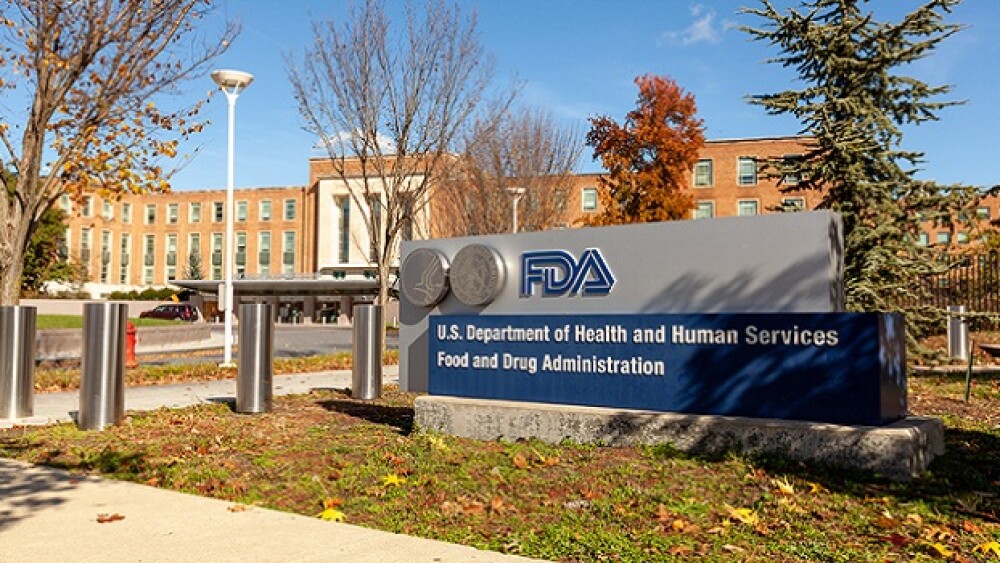PRINCETON, N.J. & LONDON--(BUSINESS WIRE)--Bristol-Myers Squibb Company (NYSE: BMY - News) and AstraZeneca (NYSE: AZN - News) today announced that the U.S. Food and Drug Administration’s (FDA) Endocrinologic and Metabolic Drugs Advisory Committee determined (by a vote of 10 to 2) that the data supporting the new drug application for ONGLYZA™ (saxagliptin) for the treatment of adults with type 2 diabetes were sufficient to rule out unacceptable cardiovascular risk relative to comparators in the program.
The Committee unanimously recommended that the Sponsors perform a post-marketing trial to confirm the cardiovascular profile of ONGLYZA. Bristol-Myers Squibb and AstraZeneca are working on a series of Phase IIIb and IV studies, including a large, controlled, randomized, post-marketing trial, to further characterize the long-term clinical effectiveness as well as the cardiovascular profile of ONGLYZA. The companies will now work with the FDA to finalize the post-marketing trial design.
“Bristol-Myers Squibb and AstraZeneca are encouraged by the Committee’s recommendation. We will work closely with the FDA to support the review of ONGLYZA,” said Brian Daniels, senior vice president, Global Development and Medical Affairs, Bristol-Myers Squibb.
ONGLYZA is an investigational, selective, reversible inhibitor of the dipeptidyl peptidase-4 (DPP-4) enzyme. The ONGLYZA application to the FDA includes use as a monotherapy, as an adjunct to diet and exercise, use in combination with three types of commonly used oral anti-diabetic (OAD) medications - metformin, thiazolidinediones and sulfonylureas (SUs) when the single agent alone does not provide adequate glycemic control, as an adjunct to diet and exercise – and use in initial combination therapy with metformin, as an adjunct to diet and exercise.
The FDA Endocrinologic and Metabolic Drugs Advisory Committee based its recommendation on review of data from the comprehensive ONGLYZA clinical development program, which included more than 5,000 individuals, more than 4,000 of whom were given ONGLYZA. Data presented included safety and efficacy results from six pivotal Phase III trials, in addition to comprehensive post hoc pooled analyses evaluating cardiovascular risk in the Phase IIb and Phase III studies, which included individuals followed for up to 2.5 years and more than 3,700 person-years of exposure to ONGLYZA. The post hoc pooled analyses did not show evidence of a cardiovascular safety signal in individuals taking ONGLYZA.
The FDA is not bound by the Advisory Committee’s recommendations, but takes its advice into consideration when reviewing new drug applications. Bristol-Myers Squibb and AstraZeneca will review the information leading to the Committee’s decision and continue to work closely with the FDA to support the review of ONGLYZA. The new drug application for ONGLYZA was submitted to the FDA on June 30, 2008, and has an action date of April 30, 2009.
ONGLYZA, an investigational drug under joint development by Bristol-Myers Squibb and AstraZeneca for the treatment of type 2 diabetes, was specifically designed to be a selective inhibitor with extended binding to the DPP-4 enzyme, with dual routes of clearance. ONGLYZA is being studied in ongoing and further planned clinical trials.
About DPP-4 Inhibitors
DPP-4 inhibitors are a class of compounds that work by affecting the action of natural hormones in the body called incretins. Incretins decrease elevated blood sugar levels (glucose) by increasing the body’s utilization of sugar, mainly through increasing insulin production in the pancreas, and by reducing the liver’s production of glucose.
About Type 2 Diabetes
Diabetes (diabetes mellitus) is a chronic disease in which the body does not produce or properly use insulin. Insulin is a hormone that is needed to convert sugar, starches (carbohydrates) and other nutrients into energy needed for daily life. The cause of diabetes continues to be investigated, and both genetic and environmental factors such as obesity and lack of exercise appear to play a role. Diabetes is associated with long-term complications that affect almost every part of the body. The disease may lead to blindness, heart and blood vessel disease, stroke, kidney failure, amputations, and nerve damage.
There are two primary underlying causes associated with type 2 diabetes: the body does not produce enough insulin (insulin deficiency), or the cells ignore the insulin (insulin resistance). Symptoms of type 2 diabetes develop gradually, and their onset is not as sudden as in type 1 diabetes. Symptoms may include fatigue, frequent urination, increased thirst and hunger, weight loss, blurred vision, and slow healing of wounds or sores. Some people, however, have no symptoms.
Type 2 diabetes is most often associated with older age, obesity, family history of diabetes, previous history of gestational diabetes, physical inactivity and certain ethnicities. People with type 2 diabetes often are characterized with: insulin resistance, abdominal obesity, a sedentary lifestyle, having low HDL-C (“good”) cholesterol levels and high triglyceride levels and hypertension.
Type 2 diabetes accounts for approximately 90 to 95 percent of all diabetes. This equates to roughly 221 million people with type 2 diabetes globally, and 21.2 million people in the U.S. alone.
The American Diabetes Association recommends a hemoglobin A1C measurement of less than 7 percent for most people with type 2 diabetes. Hemoglobin A1C is a measurement of a person’s average blood glucose level over a two-to-three month period and is considered an important marker of long-term glucose control. Other important markers for type 2 diabetes include fasting plasma glucose, a measure of a person’s blood glucose after at least eight hours of fasting and postprandial glucose, a measure of a person’s blood glucose after a meal.
Bristol-Myers Squibb and AstraZeneca Partnership
Bristol-Myers Squibb and AstraZeneca entered into collaboration in January 2007 to enable the companies to research, develop and commercialize two investigational drugs for type 2 diabetes – saxagliptin and dapagliflozin. The Bristol-Myers Squibb/AstraZeneca Diabetes collaboration is dedicated to global patient care, improving patient outcomes and creating a new vision for the treatment of type 2 diabetes.
About Bristol-Myers Squibb
Bristol-Myers Squibb is a global biopharmaceutical company whose mission is to extend and enhance human life. For more information visit www.bms.com.
About AstraZeneca
AstraZeneca is a major international healthcare business engaged in the research, development, manufacturing and marketing of meaningful prescription medicines and supplier for healthcare services. AstraZeneca is one of the world’s leading pharmaceutical companies with healthcare sales of US$ 31.6 billion and is a leader in gastrointestinal, cardiovascular, neuroscience, respiratory, oncology and infectious disease medicines. For more information about AstraZeneca, please visit: www.astrazeneca.com.
Bristol-Myers Squibb Forward-Looking Statement
This press release contains “forward-looking statements” as that term is defined in the Private Securities Litigation Reform Act of 1995, regarding the research, development and commercialization of products. Such forward-looking statements are based on current expectations and involve inherent risks and uncertainties, including factors that could delay, divert or change any of them, and could cause actual outcomes and results to differ materially from current expectations. No forward-looking statement can be guaranteed. Among other risks, there can be no guarantee that the product described in this release will receive regulatory approval. There can be no assurance that if approved, the product will be commercially successful. Forward-looking statements in the press release should be evaluated together with the many uncertainties that affect Bristol-Myers Squibb’s business, particularly those identified in the cautionary factors discussion in Bristol-Myers Squibb’s Annual Report on Form 10-K for the year ended December 31, 2008, its Quarterly Reports on Form 10-Q, and Current Reports on Form 8-K. Bristol-Myers Squibb undertakes no obligation to publicly update any forward-looking statement, whether as a result of new information, future events, or otherwise.
AstraZeneca Forward-Looking Statement
The statement contained herein include forward-looking statements. Although we believe our expectations are based on reasonable assumptions, any forward-looking statements, by their very nature, involve risks and uncertainties and may be influenced by factors that could cause actual outcomes and results to be materially different from those predicted. The forward-looking statements reflect knowledge and information available at the date of the preparation of this press release and the Company undertakes no obligation to update these forward-looking statements. Important factors that could cause actual results to differ materially from those contained in forward-looking statements, certain of which are beyond our control, include, among other things, those risk factors identified in the Company’s Annual Report/Form 20-F for 2008. Nothing contained herein should be construed as a profit forecast.
ONGLYZA™ is a trademark of the Bristol-Myers Squibb Company.
Contact:
Media:
Bristol-Myers Squibb Ken Dominski, 609-252-5251 ken.dominski@bms.com or
AstraZeneca Neil McCrae, +44 207 304 5045 neil.mccrae@astrazeneca.com or
Investors US: Bristol-Myers Squibb John Elicker, 609-252-4611 john.elicker@bms.com or
AstraZeneca Edward Seage, 302-886-4065 edward.seage@astrazeneca.com or
Jorgen Winroth, 212-579-0506 jorgen.winroth@astrazeneca.com or
Investors EU: AstraZeneca Jonathan Hunt, +44 207 304 5087 jonathan.hunt@astrazeneca.com or
Karl Hard, +44 207 304 5322 karl.j.hard@astrazeneca.com or
James Mead, +44 207 304 5062 james.mead@astrazeneca.com




